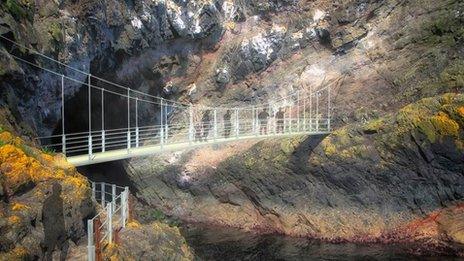The Gobbins: Dramatic Islandmagee coastal path reopens after revamp
- Published
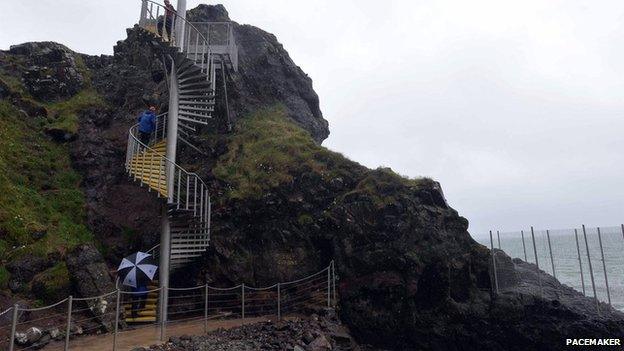
Visitors to the revamped tourist attraction along the County Antrim coast need a head for heights and a good level of fitness
A dramatic cliff face walk in County Antrim that was built more than a century ago has reopened to the public after multi-million pound revamp.
The Gobbins coastal path in Islandmagee was the brainchild of Irish railway engineer Berkley Deane Wise.
It first opened in 1902 and quickly became famous as a white knuckle walk.
Edwardian era visitors were able to have a close encounter with waves and wildlife.
The path, which is carved into black basalt cliffs, was an engineering triumph - it's connected by a network of walkways and bridges - the most iconic of which was the tubular bridge.

The tubular bridge has been replaced with an almost identical replica
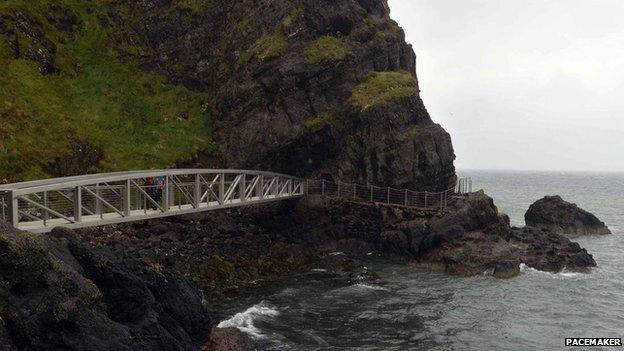
The new walkway will provide visitors with dramatic views of the coastline
Post-war austerity spelt decline for the 1.5 mile walkway and it was closed to the public in the 1950s.
Since then only seabirds have enjoyed the stunning views from this part of our coastline.
The BBC's Andy Martin: The Gobbins is "a pathway to nowhere which was created simply to celebrate the breathtaking"
Rumblings down the years about restoring the path finally turned into action in 2013, when the restoration project got under way.
Since then, £7.5m has been spent replacing bridges, hand rails and constructing a new visitors centre.
The tubular bridge has been replaced with an almost identical replica.
While modern engineering methods have made the work safer, construction worker Paul Montgomery says he has an enhanced respect for those who built the original path.
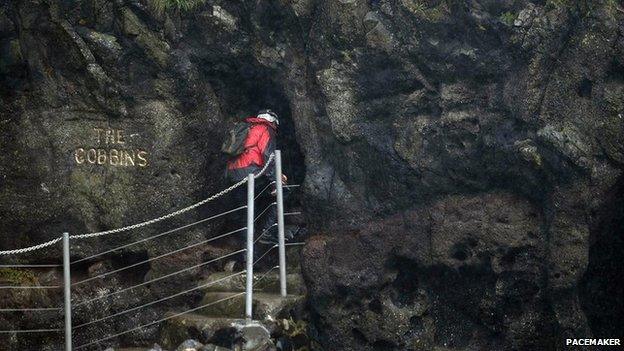
The original path was carved into black basalt cliffs and was considered an engineering triumph
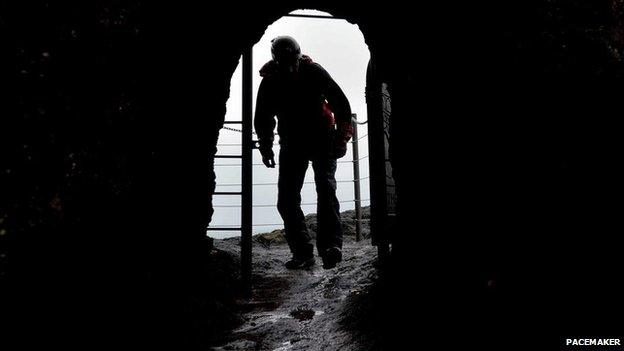
The starting point of the pathway is still accessed via a hole through rock known as Wise's eye
"They did an immense job, because the beams I have seen from the old bridges were concrete cased and to get them down here would have been a feat in itself as there were no cranes in those days," he said.
"So I have a lot of respect for them."
While health and safety is more of a concern nowadays some things have not changed, including the steep walk down to the starting point - a hole through rock known as Wise's eye.
Before starting the Gobbins experience, visitors are given a safety briefing and a hard hat in the visitors centre, it's then on to a minibus for the two-mile journey to the path.
The walk is described as strenuous and is not suitable for everyone.
No-one under the height of 1.2m will be permitted, a good level of fitness is required and people with cardiac, respiratory, asthmatic or joint conditions are urged not to attempt it.
The route allows visitors to see coastal birds such as puffins, guillemots and kittiwakes up close. It's also possible to spot porpoises off the coast.

Before starting the Gobbins experience, visitors are given a safety briefing and a hard hat
This attraction has created some much needed employment in the area and one of the tour guides is Robert Stewart, a local farmer who has decided to try something new.
"I'm very enthusiastic about my new job," he said.
"Everybody knows about the Giant's Causeway but I think we have something here that can compete with the Giant's Causeway and is just as beautiful."
'Big hopes'
Groups of 10 to 15 will be guided along the bridges which cling to the cliff face just metres above the sea.
Tours should be booked in advance and the costs are £8.50 for adults, concessions £6 and a family rate of £23.
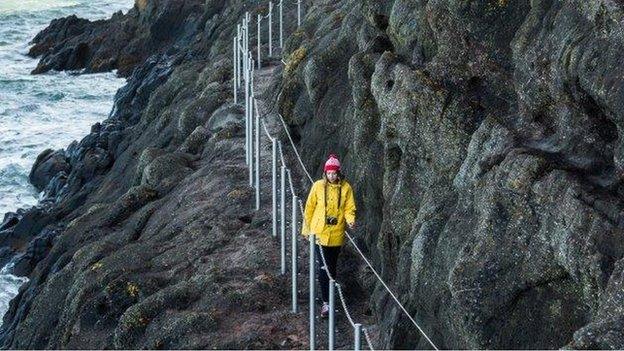
£7.5m has been spent replacing bridges, hand rails and constructing a new visitors centre
There will also be a cliff top walk which will be free for the public and has a viewing platform that hangs over the cliff. This element of the work is not expected to be complete until September.
The project is over a year late and £1.5m over budget, but Mid and East Antrim Council has big hopes for the attraction and is expecting 50,000 visitors a year.
'Staggeringly beautiful'
Tourism Minister Jonathan Bell, who walked the path on Tuesday, said it was "staggeringly beautiful".
"It is something that you could bring visitors from anywhere in the world to and be very proud of the quality of the tourism offering," he said.
"Having done it, I think it represents real value for money and puts Northern Ireland with another - and I genuinely mean this - top quality, international tourist destination."
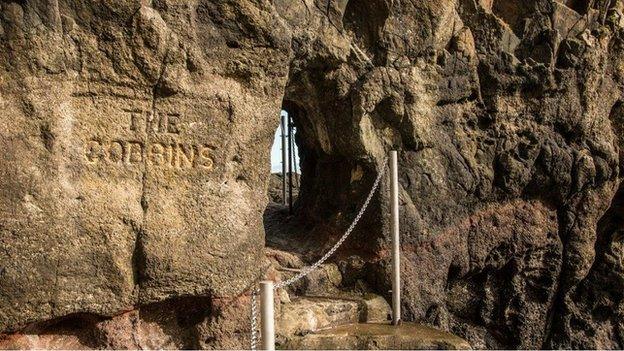
The route allows visitors to see coastal birds such as puffins, guillemots and kittiwakes up close
The council's mayor Billy Ashe said it was fantastic for the area.
"I think that first and foremost it will put us back on the map," he said.
"Berkley Deane Wise thought that this path could be one of the world's attractions - I agree with him.
"I think people will be coming here for many, many, many years to feast their eyes on this marvellous achievement."
- Published29 May 2013
